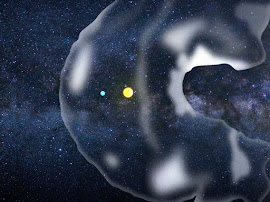Interstellar Clouds: How Earth's Climate Can Be Shaped by Cosmic Encounters
The Earth's climate is a complex system formed by many factors, both terrestrial and extraterrestrial. Although we often attribute climate change to natural phenomena such as volcanic eruptions or human activity, recent research suggests that Earth's passage through dense interstellar clouds may have also played a significant role in shaping our planet's past climate.
What are interstellar clouds?
Interstellar clouds are vast regions of gas and dust between stars. These clouds, which are mostly hydrogen with traces of heavier elements, are important in the cosmic life cycle, providing the raw material for star formation. Even though space may seem empty, these clouds can have a powerful effect on the celestial bodies that pass through them, including Earth.
Earth's journey through space
Because the Solar System orbits the Milky Way, it does not move through a vacuum. Over millions of years, the Earth and its neighboring planets probably passed through various interstellar clouds. Recent research by a team of Boston University astronomers led by Jess A. Miller has shown that such passages can compress the heliosphere—the protective bubble created by the solar wind—and expose Earth to increased levels of cosmic radiation and interstellar material.
How did these clouds affect the Earth's climate?
Two important encounters with dense interstellar clouds are believed to have occurred 2 and 7 million years ago. These interactions may have contributed to dramatic climate changes, including periods of global cooling and ice ages. As Earth passed through these clouds, the influx of dust and gas into the atmosphere could have reduced the amount of sunlight reaching the planet's surface, leading to lower global temperatures.
One striking piece of evidence is the presence of silvery blue clouds—silvery blue clouds that form in the upper atmosphere and are rarely seen unless the conditions are right. It is theorized that interstellar material entering Earth's atmosphere may have helped form these high-altitude clouds, further reflecting sunlight and contributing to the cooling effect.
A cosmic influence on the future climate?
Although these events took place millions of years ago, they provide valuable information about how cosmic forces outside our planet can affect Earth's climate. As the Solar System continues its journey around the Milky Way, it remains likely that future encounters with interstellar clouds could have similar consequences. However, predicting the timing and intensity of such events remains a challenge for both astronomers and climatologists.
Science by hypothesis
As Earth passed through these interstellar clouds, the resulting compression of the heliosphere reduced its ability to shield the planet from cosmic rays, Miller's team said. This increased exposure could lead to changes in atmospheric chemistry, including increased hydrogen levels in the upper atmosphere. As this hydrogen descended, it likely contributed to the formation of water molecules and in turn cooling through the creation of these reflective clouds.
Further research is needed to confirm these hypotheses, but the possibility that cosmic events have influenced Earth's climate underscores the interconnectedness of the universe.
Expert opinion:
The notion that Earth's climate is influenced by events outside our planet adds a new dimension to our understanding of climate science. Although human activities and natural Earth processes remain the primary drivers of climate change today, recognition of the role of cosmic encounters invites further investigation into the broader forces shaping our world.
For a more in-depth exploration of this topic, check out NASA's Interstellar Space Exploration which details the Voyager spacecraft's current journey exploring the boundary between the solar system and interstellar space .
Personal Opinion: The idea that Earth's climate could be influenced by something as vast and distant as interstellar clouds is both humbling and awe-inspiring. It reminds us that our planet is part of a larger cosmic ecosystem that has interacted with the universe for billions of years. While our focus is on understanding and mitigating human-induced climate change, it's interesting to consider what role celestial forces may have played in shaping our planet's history—and may continue to do so in the future.
By considering this cosmic connection, we expand our perspective on Earth's place in the universe and highlight the importance of studying the many variables that can influence our climate, both near and far.
Earth's climate is influenced not only by internal or human factors. Passage through interstellar clouds millions of years ago likely contributed to ice ages and global cooling. As we continue to unravel the mysteries of our planet's past, studying these cosmic interactions may reveal new insights into future climate patterns.




Comments
Post a Comment